I have such an admiration for Julia Child. So, no surprise that I wanted to read this new biography of her.
The author, Bob Spitz, was an unknown to me. He has made a name for himself in the book world. He published a 1000-page tome of The Beatles: The Biography. He’s written for several magazines as well, and now, with this newest book in his repertoire, Dearie: The Remarkable Life of Julia Child
he’ll likely continue in the genre. BTW, “Dearie” refers to the word Julia used for almost everyone – from waiters to bellhops or close friends. She called almost everyone “dearie.”
Bob Spitz was a huge fan of Julia Child, which led him to write this book. In the acknowledgements he says: The genesis of this book sprang from my amazing luck, traveling with Julia Child in Sicily in 1992. For several weeks we crisscrossed the island, eating, of course, but talking every chance we got. She was already a beloved icon, larger than life in so many different ways, but perhaps the most down-to-earth celebrity I’d ever encountered. Inasmuch as I was writing about her for several magazines, we were on the record throughout the trip, but she never held back from speaking her mind, never shied from a tough opinion, never pulled her punches, never blinked She was exactly like her TV persona: warm, funny, outgoing, whip-smart, incorrigible, and most of all, real. If I have to admit to one prejudice confronting this book, it is that I had a powerful crush on her. Sorry. Deal with it.
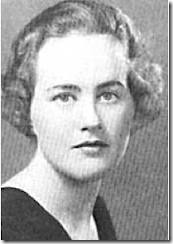 From the first page I found myself picking it up at odd times because I found the story compelling. Bob Spitz writes interesting narratives. He gives you the facts, straight, and yet you can feel the drama behind so many events in Julia’s life. I found the history of Julia McWilliams, from nearby Pasadena, a daughter of a privileged family, quite fascinating. Her father rarely ever gave her an encouraging word – and maybe because from the get-go Julia was a kind of a maverick. She didn’t follow in her father’s ultra-conservative political path, and was forever ridiculed for it. She wasn’t driven to get good grades particularly, never felt herself a scholar, went to Smith College where she spent more time drinking and carousing than she did studying. Yet she graduated. At loose ends after that, she had no direction in her life, and her father, the ever present critic, didn’t encourage her much. Money wasn’t an issue. She did live in New York for awhile, took a menial job (about all she could find), but wasn’t particularly happy. She was a socialite, but not a fluttering butterfly. She wanted some meaning to her life, but just couldn’t quite figure out what or where it was. Her mother died and Julia ended up moving home to Pasadena as a companion to her father and she resumed her socialite role in her home town. He was not ailing, but she and her 2 siblings felt Dad needed some watching over.
From the first page I found myself picking it up at odd times because I found the story compelling. Bob Spitz writes interesting narratives. He gives you the facts, straight, and yet you can feel the drama behind so many events in Julia’s life. I found the history of Julia McWilliams, from nearby Pasadena, a daughter of a privileged family, quite fascinating. Her father rarely ever gave her an encouraging word – and maybe because from the get-go Julia was a kind of a maverick. She didn’t follow in her father’s ultra-conservative political path, and was forever ridiculed for it. She wasn’t driven to get good grades particularly, never felt herself a scholar, went to Smith College where she spent more time drinking and carousing than she did studying. Yet she graduated. At loose ends after that, she had no direction in her life, and her father, the ever present critic, didn’t encourage her much. Money wasn’t an issue. She did live in New York for awhile, took a menial job (about all she could find), but wasn’t particularly happy. She was a socialite, but not a fluttering butterfly. She wanted some meaning to her life, but just couldn’t quite figure out what or where it was. Her mother died and Julia ended up moving home to Pasadena as a companion to her father and she resumed her socialite role in her home town. He was not ailing, but she and her 2 siblings felt Dad needed some watching over.
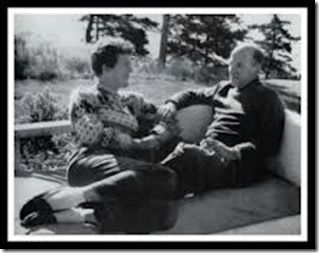 When war loomed, she joined the OSS, eventually going to Ceylon (now Sri Lanka). And later to China. She met Paul Child, a very scholarly type, who was also with the OSS. They were friends for a year or more, and then their relationship bloomed. Julia never felt she was Paul’s mental equal. Although he didn’t attend college, he was extremely well read and could debate philosophy, politics, poetry and social culture with the best of them. They married eventually (much to her Dad’s dismay because Paul Child was a social liberal, as was Julia, but Paul more so). These facts rankled Julia’s father until the end of his days. Family dinners were always fraught with argument about politics, so much so that Julia did her best to avoid visiting home at almost all cost. Julia and Paul were devoted to each other for life.
When war loomed, she joined the OSS, eventually going to Ceylon (now Sri Lanka). And later to China. She met Paul Child, a very scholarly type, who was also with the OSS. They were friends for a year or more, and then their relationship bloomed. Julia never felt she was Paul’s mental equal. Although he didn’t attend college, he was extremely well read and could debate philosophy, politics, poetry and social culture with the best of them. They married eventually (much to her Dad’s dismay because Paul Child was a social liberal, as was Julia, but Paul more so). These facts rankled Julia’s father until the end of his days. Family dinners were always fraught with argument about politics, so much so that Julia did her best to avoid visiting home at almost all cost. Julia and Paul were devoted to each other for life.
The picture below is Julia’s reconstructed Cambridge kitchen at the Smithsonian (I believe). Note the distinctive pegboard, something she and Paul worked out so they’d always know where everything was kept in every Julia kitchen. 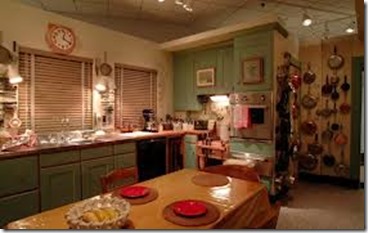 Having already read Julia’s grand-nephew’s biography of Julia’s years in France, My Life in France
Having already read Julia’s grand-nephew’s biography of Julia’s years in France, My Life in France, I enjoyed reading this new book, Julia’s full-life history. I’ve come away with so much more respect for Julia. Her years of cooking in Paris, making recipes over and over and over until she felt they were perfect, has to be a testament to her tenacity. And her tendency to be a perfectionist. Actually, last night I went online and ordered the DVD set of The French Chef: Julia Child 10-Disc Collection
TV series Julia did. (It contains an interview with Julia, and supposedly all the recipes that accompanied all the shows.) Having read this new book, and knowing the kind of labor of love she put into the making of the shows – and more importantly – how she revised the long and tedious French recipes from her first book of the 2-book series Mastering the Art of French Cooking (2 Volume Set)
I wonder if I’ll be more intrigued to try more of her recipes. I only own one of her cookbooks, and have cooked very few recipes from it.
Julia was a a fount of energy. Again and again through the book I read of her incredibly long hours in the kitchen from when she began cooking in Paris to her last days, almost. What I found new and interesting were:
- the life-long feud between Julia and Madeleine Kamman – you can read more about it here; she also didn’t get along all that well with Jacque Pepin either! Even though they co-hosted a series of cooking demonstrations for TV, behind the façade of smiles, they didn’t like each other much;
- Julia loved-loved men; even in her declining years she had a boyfriend, of sorts, even while her beloved husband Paul resided in a special home where he could be well cared for; whether any hanky-panky went on, I don’t know; this book doesn’t indicate so; Julia adored Paul unflinchingly, yet she craved male companionship once Paul wasn’t around;
- although most everyone who ever watched Julia knows she had an irreverent side – she could laugh at herself and others, but was a natural in front of the TV camera; she also could use that biting tongue now and then. She had a stubborn streak. So, I didn’t know that Julia walked off the stage of a little cooking segment she did with Regis and Kathy Lee because Kathy Lee refused to get in and help – and get her hands dirty. It was arranged and agreed upon, but once the camera started rolling, Kathy Lee refused. At the break, Julia and her team walked out;
- learning about her very assertive, abrasive lawyer she hired some way down her career path – she adored him – but oh, he made people mad. Yet he protected Julia’s interests, which was his purpose – I’d never heard about him before;
- how hard Julia worked (with Paul, and with her editors, and her attorney) to keep her momentum once she reached the pinnacle; Julia was ahead of her time, I think, in knowing and understanding that she had to stay front and center or people (us home cooks) would forget her.
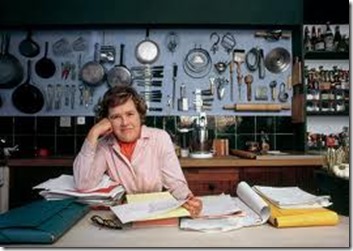 The photo at right – I think – was in Julia’s Provence kitchen, where she spent months working on the recipes for the Mastering manuscript. Note her “signature” neck scarf.
The photo at right – I think – was in Julia’s Provence kitchen, where she spent months working on the recipes for the Mastering manuscript. Note her “signature” neck scarf.
The author is a good story-teller, for sure. There were some times that he used colloquialisms that bordered on hip, trite or trendy. They seemed a bit strange in a biography. Since he’s been a magazine journalist, perhaps that’s why. Yet I found the book a page-turner when, in fact, there was nothing about Julia’s life that gave it that kind of intrigue. I found it interesting that many culinary professionals (back in the 60s and 70s) ridiculed Julia for calling herself a chef – she never cooked in a restaurant so she had no right to the title. She never called herself that – the TV show folks devised the title of the show. And yet, I think she was every bit a chef as any restaurant one just because of the dedication to her craft. Her recipes have stood the test of time, obviously!
So overall, I found the book very readable. Am sorry I never took the opportunity to meet Julia Child when I could have at her many book signings or classes. During her 80th birthday celebrations she attended a cooking class in her honor at a restaurant near us, but the tariff was $500 for the privilege. I just couldn’t – wouldn’t – pay that much, as much as I wanted to meet her! But I lived her life vicariously through this very fascinating biography. If you’re anything of a Julia fan, you’ll be glad to have read it.





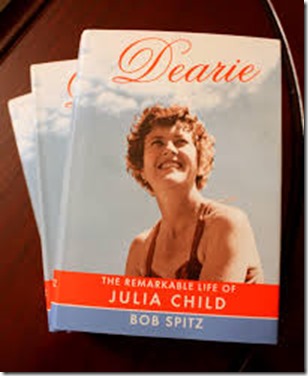



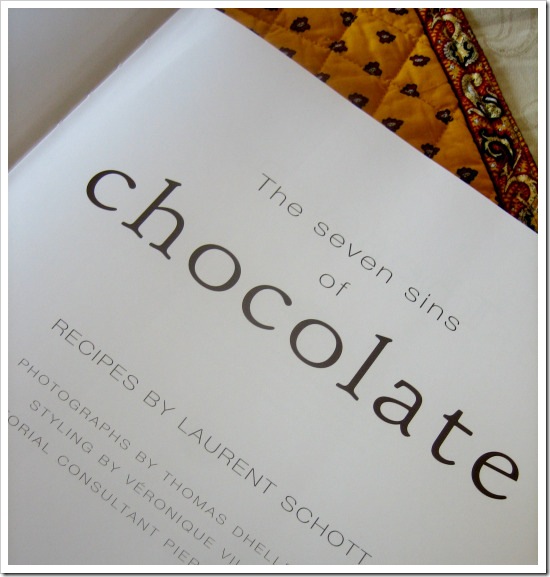
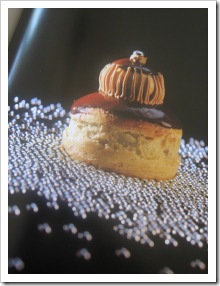
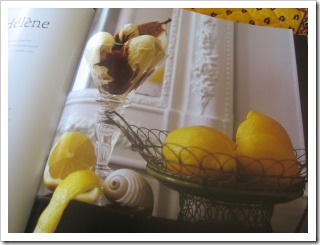
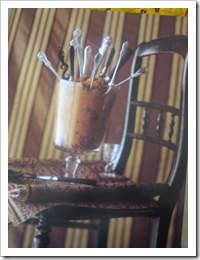
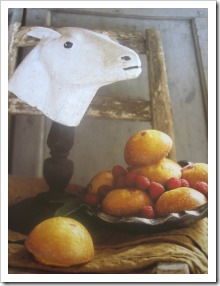

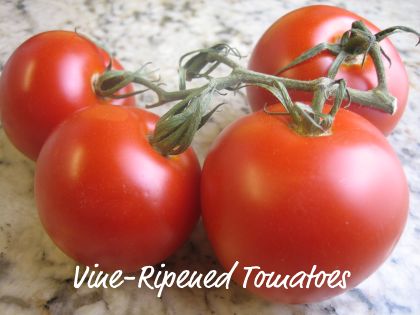

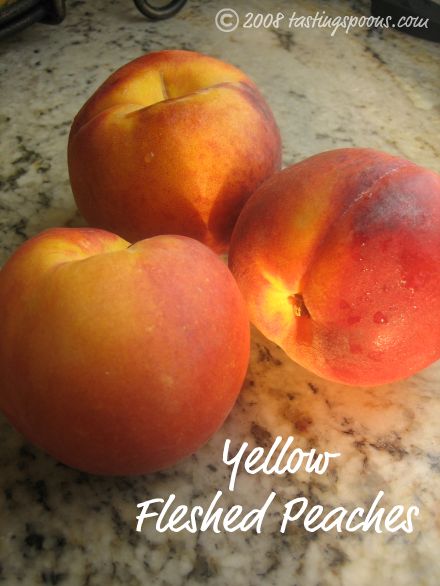
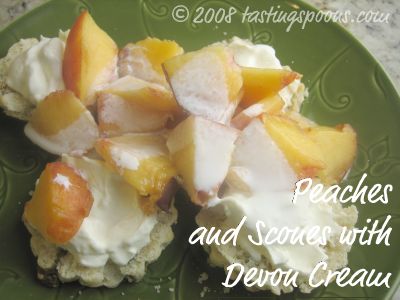
Leave a Comment!